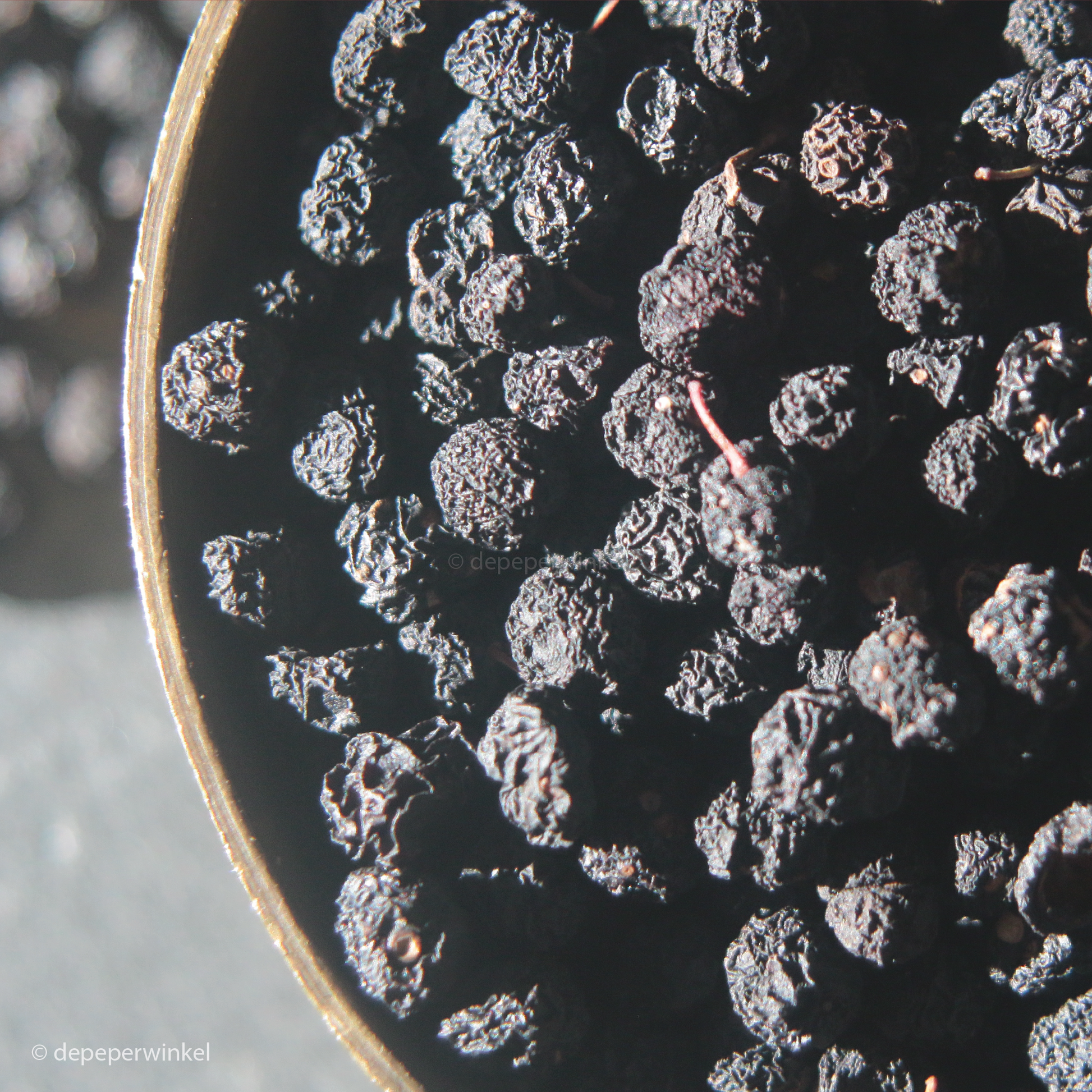depeperwinkel
Tasmanian pepper (bush pepper)
Tasmanian pepper (bush pepper)
In stock
Unable to load availability for pickup
Tasmanian mountain pepper is an exclusive, very rare pepper that is considered a 'bush food', products that are specific to the Australian bush. Experience how this exotic pepper in your mouth 'exploded'.
Very exclusive!
The Tasmanian mountain pepper is a plant from a genus that only occurs in Australasia and grows wild in many places. The two-lobed 'berry' contains polygodial, which provides a unique sharpness experience, as well as eugenol, vitamins A and C, and various minerals. It contains more antioxidants than most real berries.
Besides the dried berry, the dried leaf of the plant is also eaten. The aborigines have used the plant for centuries for medicinal purposes, against skin complaints and stomach pain, the leaf as a herb and the dried berry as a spice. The latter was also discovered by the European, mostly British settlers at the end of the 18th century.
The alpine pepper, related to the Tasmanian pepper, grows in the highlands of Tasmania, and is therefore also called mountain pepper. The British introduced the plant, and have cultivated it since the beginning of the last century in Cornwell. They call the plant after the leaf Cornish pepper leaf. The leaves have a sharp cinnamon flavour, the berries are spicy and fruity. The flavour is reminiscent of myrtle. The berry initially gives a soft sweet taste experience, which gradually changes into the sharpness that is reminiscent of Zanthoxylum peppers such as Szechuan.
Tip: we also have the botanically related pepper canelo from Chile, you could call it a Tasmanian pepper with a hint of cinnamon.
Usage
A versatile pepper for fish and seafood, in marinades for meat, with or without soy sauce. The cinnamon accent gives the berry a typical bushfood flavour, which combines well with cumin, coriander, lemon and red fruit. Also comes into its own in stone fruit jams such as apricots. Try adding a few grains to your gin or gin cocktail; preferably soak in some gin beforehand.
Recipes):

Smell and taste
In Tasmanian pepper you taste cinnamon, myrtle and nutmeg, but also juniper berry, with which it combines well.
- 1,8-cineole, eucalyptol, the refreshing taste of mint and myrtle (and eucalyptus oil)
- linalool, responsible for the fresh floral scent
- α- and β-pinene, woody pine odor, as in cumin, pine (cone), juniper, black pepper and hemp
- safrole, sweet spicy with aniseed notes, like cinnamon
- myristicin, warm spicy, like balsamic, in cinnamon, nutmeg and black pepper
Features:
- 100% pepper berries from the Tasmannia lanceolata
- origin: Tasmania, Australia
Assortment
- available in glass, stand-up pouch and 10 ml test tube
- larger quantities on request
Gift wrapping
- The jar is available in a tasteful gift packaging, consisting of a cube box filled with black tissue paper
- For an overview of our gift packaging, please refer to the section gift wrapping
Save:
- store your tasmanian pepper in a closed container
- preferably store in a dark, dry and cool place
- at least good until September 2026 (09-2026)
- This expiration date is an indication
Want to know what this Tasmanian pepper tastes like?
You can also try a test tube. The tube contains enough pepper to fathom the flavor essence.
Batch number
The batch number helps us trace which supply an item originates from. It is stated on the packing slip and the invoice









